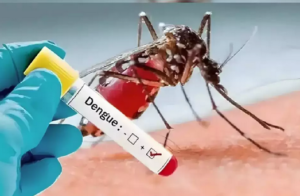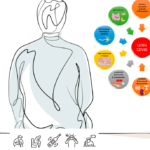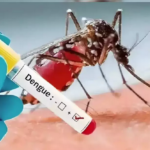Most Common Dental Problems in Kids
For the overall well-being and development of kids, they must maintain good dental health. Without having healthy teeth and gums, it becomes difficult to maintain proper nutrition and speech development. Also, healthy teeth and gums contribute to building positive self-esteem and self-confidence in kids. But the sad part is that despite widespread knowledge about these facts, dental problems among kids are widely prevalent. In the US alone, according to the CDC, tooth decay has been a problem in about 13% of adolescents (between the ages of 12 and 19) and 20% of children (between the ages of 5 and 11).
To avoid long-term complications and to ensure optimal oral health is maintained in kids, it is necessary to focus on early detection and provide timely treatment. By taking care of oral health, dental problems, like pain, infection, impaired cognitive development, speech difficulties, etc can be put to rest easily.
Given below are some of the most common dental problems seen in kids:
- Dental Cavities
When the hard surface of your tooth is permanently damaged, it is referred to as a dental cavity or caries. There are many reasons why dental cavities can occur. In the majority of cases, there is a combination of factors, like bacteria in the mouth, inadequate brushing and flossing, sipping sugary drinks, and frequent snacking.
Most people often get confused between tooth decay and cavities. Therefore, understanding the difference between the two is important. When the acids produced by bacteria start to break down the enamel, it leads to the first stage of tooth decay. When this is left untreated, the decay can progress leading to a hole or a cavity in the tooth structure.
The chewing surfaces of the back teeth (molars and premolars) and the spaces between teeth where food and plaque can easily collect are where cavities in children are most frequently seen. When babies and toddlers are exposed to sugary beverages for extended periods, their front teeth may develop early childhood caries, which is also referred to as baby bottle tooth decay.
Dental cavities in kids need to be prevented at all costs. One sure-shot way of ensuring this is to encourage good oral hygiene habits, like regular dental check-ups, and brushing twice a day. Maintaining good oral health can also be easily achieved by following a balanced diet and by limiting sugary drinks and snacks. If cavities are detected, you may need to go for some treatment options, like fillings, crowns, or even tooth extraction or root canal treatment.
- Tooth Decay
Tooth decay is also referred to as cavities or dental caries. It is a condition in which there is a progressive destruction of the tooth structure that is caused by acids generated by bacteria in the mouth. The hard outer layer of the tooth, the enamel, gets attacked by these acids, and can eventually lead to holes or cavities in the tooth.
Some of the symptoms of tooth decay in kids may include visible pits or holes in the teeth, sensitivity or pain while drinking or eating cold, hot, or sweet items, black or brown staining on the tooth surface, and bad breath. However, in rare cases, no apparent symptoms may be present for tooth decay. Therefore, regular dental check-ups are needed.
Many factors that can lead to tooth decay in kids. Some of these include:
- Inadequate fluoride exposure
- Regular consumption of acidic or sugary drinks and foods
- Poor oral hygiene
- Certain medications or medical conditions
- Dry mouth
Children with special needs or developmental disabilities are also susceptible to tooth decay as it is difficult for them to maintain proper oral hygiene.
One of the most efficient ways of combating tooth decay in kids is to adopt preventive measures. Kids need to be encouraged to practice good oral hygiene habits, like brushing twice a day using fluoride toothpaste and flossing. Doing this will prevent acid buildup and remove plaque easily. Also, for early detection and intervention, regular dental check-ups and professional cleanings are a must.
Depending on the severity of tooth decay, treatment options for kids are decided. If the tooth decay is in the early stage, then fluoride treatments or sealants or other remineralization techniques are employed to protect and strengthen the enamel. However, for advanced conditions, fillings, crowns, or root canal treatment may be employed to restore the affected tooth. In extreme cases, extraction may be the only option left.
- Gum Disease
Gum disease in kids can arise whenever there is an infection of the gums and tissues surrounding the teeth. The main reason for the occurrence of this condition is the buildup of plaque on the gums and teeth.
Given below are symptoms that may be seen in kids suffering from gum disease:
- Tender gums
- Redness of gums
- Swollen gums
In the early stages, kids may bleed a bit during brushing or flossing. However, in more advanced stages, kids may experience any of the following conditions:
- Receding gums
- Loose teeth
- Bad breath
Gum disease can arise in kids due to many reasons, including underlying medical conditions, poor oral hygiene, genetic predisposition, etc. Kids who are fond of eating starchy and sugary foods are also at risk of this disease.
It is important to prevent gum disease in kids. The best way to ensure this is to establish good oral hygiene in kids at an early age. Efforts have to be made to prevent gum inflammation and remove plaque through regular brushing, flossing, and professional cleanings. Also, it is beneficial to maintain a balanced diet rich in vitamins and minerals.
Some of the treatment options available include antibiotic therapy, professional cleanings, and surgical interventions. When the disease is diagnosed early, tooth loss can be prevented. Therefore, it is important to educate kids about healthy eating habits and maintain proper oral hygiene techniques.
- Teeth Alignment Issues
Some of the most common teeth alignment issues found in kids include crowding, overbite, and underbite. Crowding refers to the condition wherein there is insufficient space for the teeth to grow properly in the jaw. When this occurs, crooked or overlapping teeth may arise in kids. An overbite, on the other hand, occurs when the upper front teeth extend over the lower front teeth. An underbite happens when the opposite happens – the lower front teeth extend beyond the upper teeth.
Teeth alignment issues among kids can arise due to various factors, including:
- Genetics
- Thumb-sucking habits
- Jaw growth abnormalities
- Injuries to the mouth or jaw
- Certain developmental delays or medical conditions
Early diagnosis is critical to addressing problems related to teeth alignment among kids. When left untreated for a long period, difficulties in chewing, gum disease, increased risk of tooth decay, speech problems, and potential temporomandibular joint (TMJ) disorders or jaw pain can occur.
There are quite a few treatment options available for teeth alignment problems, including orthodontic appliances like braces, removable appliances like headgear or palatal expanders, and clear aligners. The treatment options available to tackle this problem vary depending on the kids’ age, the severity of the alignment issue, the kid’s individual needs, etc.
- Tooth Injuries and Trauma
It is common for kids to face tooth injuries and trauma due to their active lifestyles. Some of the most common tooth injuries seen in kids are fractures, cracks, chips, complete tooth avulsion, and displacement. There are many reasons why these injuries occur to kids. Some of the reasons include physical altercations, playground mishaps, sports-related accidents, or falls. Kids who engage themselves in contact sports like soccer, basketball, etc. are prone to sustaining tooth injuries.
Immediate action needs to be taken in case a kid experiences a tooth injury. In case of a cracked or chipped tooth, you can prompt the child to rinse the mouth using warm water and apply a cold compress to reduce swelling. On the other hand, if the tooth is displaced, you can attempt to reposition it in the socket. In case of a knocked-out tooth, you can place it in a container of saliva or milk until the dental treatment is given.
The severity of the injury will decide the exact nature of treatment that has to be given to the tooth. Tooth-coloured fillings or bonding may be employed in case there are minor cracks or chips. However, in case of displacements or severe fractures, dentists may recommend root canal treatment, splinting, or dental crowns. In case of complete tooth avulsion, replacement with a dental implant or reimplantation may be recommended.
Oral Habits and Their Impact
Certain oral habits of kids that develop over some time, like thumb-sucking, lip-biting, tongue-thrusting, etc. can have bad consequences on their dental health when not taken care of properly. Prolonged use of pacifiers and thumb-sucking can lead to misalignment of the teeth and jaw. This may even lead to an open bite or overbite. Lip-biting, on the other hand, although less common, can lead to injuries to the soft tissues of the mouth. When left untreated, these injuries lead to infections or scarring. Tongue-thrusting indicates a habit in kids where the tongue protrudes forward against the teeth while speaking or swallowing. This condition can contribute to speech difficulties or open bites when left untreated.
When not addressed early, bad oral habits can have long-term effects on a child’s self-esteem, speech, and development. There are quite a few strategies that can be useful for breaking harmful oral habits in kids, like using deterrents or reminders, positive reinforcement, etc.
If these habits persist in a child beyond the age of 4 or 5, or if they interfere with the normal growth of the child, then one needs to seek professional help from a dentist at the earliest.
Tags: Teeth Pain, Tooth pain for kids, Teeth pain in infants, Tooth replacement, Teeth surgery, Teeth alignment, Teeth replacement for kids, best touch specialist, Daily healthy tips, ehealthy99, ehealthytips, Doctor Advice

















